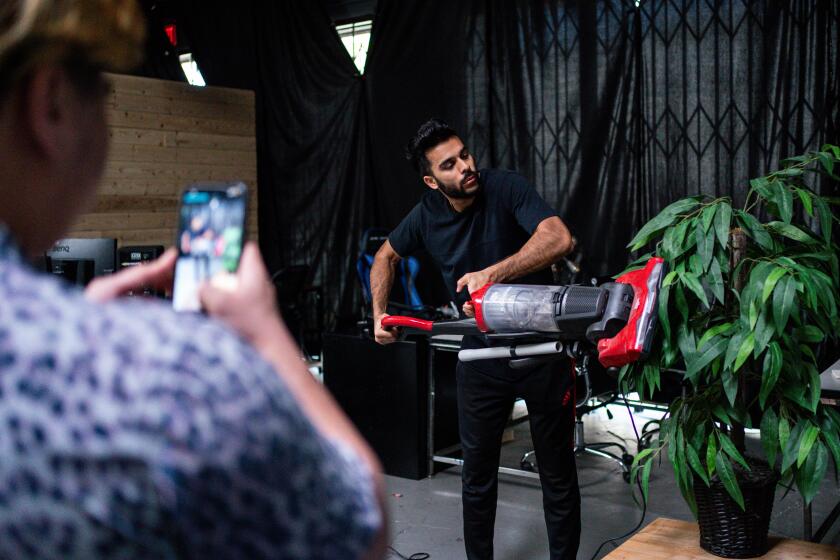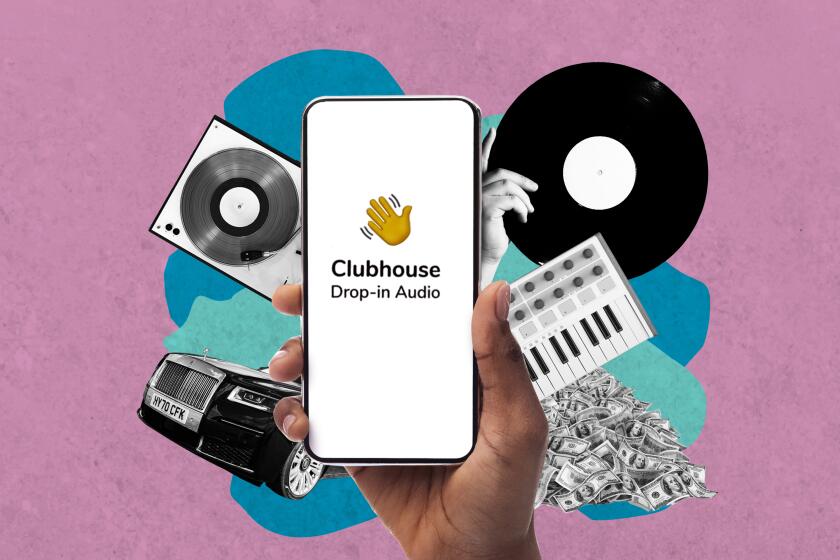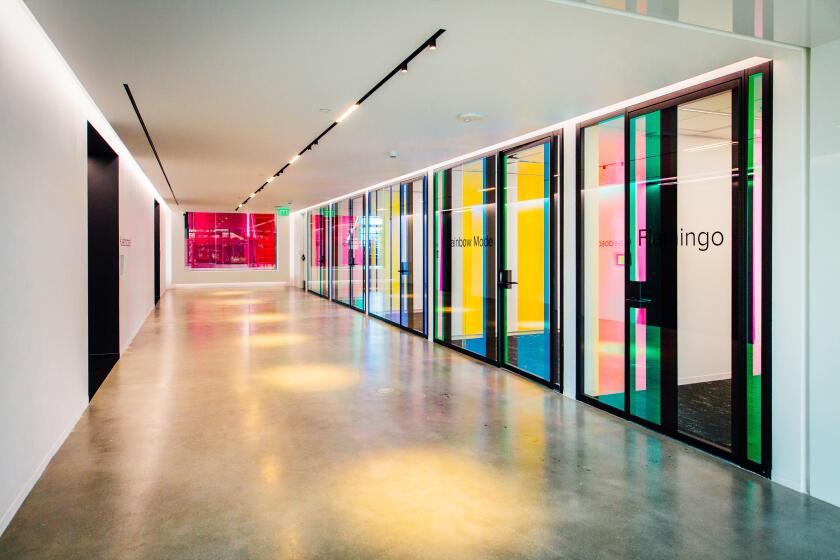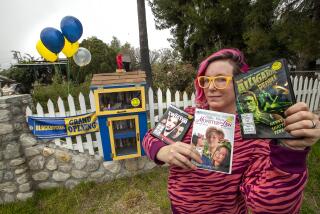Getting fans back in theaters is hard. Tech and celebrities like Ludacris are helping
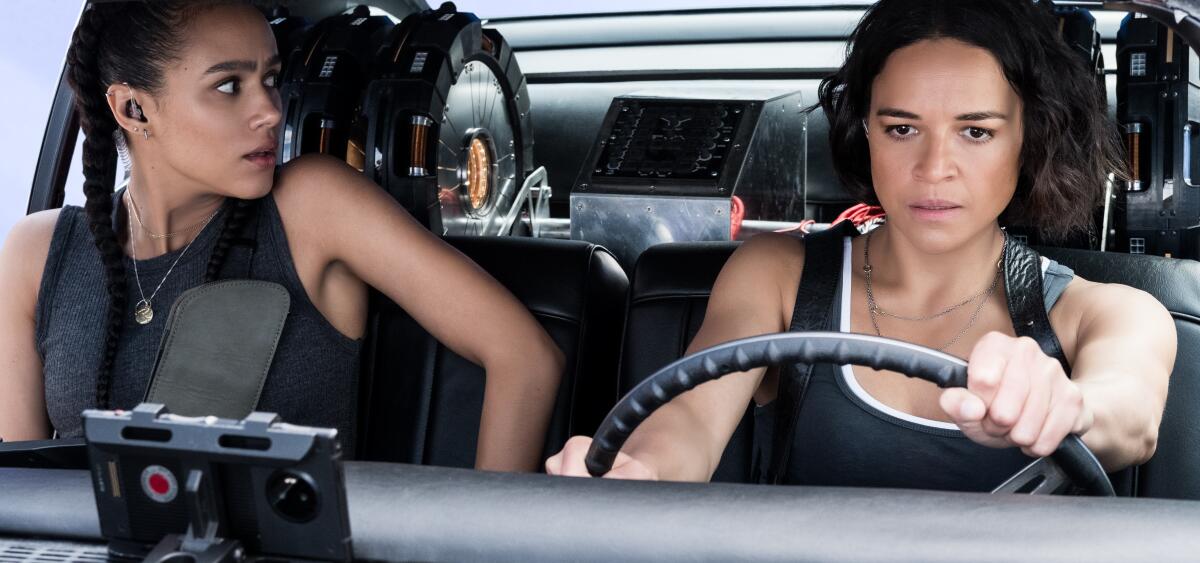
Enrique García wasn’t planning to see Universal Pictures’ “F9: The Fast Saga” at a theater. After the COVID-19 pandemic put the kibosh on large gatherings, the 45-year-old professor thought he’d wait and watch the latest “Fast and the Furious” movie at home on Blu-ray.
But he changed his mind after winning a sweepstakes and receiving a personalized video featuring “F9” actor John Cena congratulating him on a recent promotion. That was enough to get the Middlebury, Vt., resident to buy an $8 movie ticket at the Marquis theater.
WWE wrestler and actor John Cena on Cameo promoting his latest film Fast 9.
“Just the fact that you see your name and your reality — Enrique García, Middlebury College — said by a superstar, that’s the moment you are blown away, and people get very excited about it,” said García, who teaches Luso-Hispanic Studies at the school. He shared the video with his 650 Facebook friends and emailed it to his students. “It’s almost like the superstar sees me.”
As blockbuster films return to the big screen, studios are drumming up more buzz by creating personalized, targeted experiences on social media sites where younger consumers spend more of their time.
In contrast to a traditional press junket, studios such as Universal Pictures are also doing virtual, audio-only forums on Twitter where actors can tune in remotely and take questions from fans. Studios are also working with influencers to create viral videos on TikTok that highlight a film’s theme or music to spread the word.
The push comes at a crucial time for theaters, as ticket sales in the U.S. and Canada are still about 50% lower than before the pandemic, according to the research firm MKM Partners. Studios also have a backlog of movies they are now rolling out, making it difficult to compete, and are turning to tech companies to help cut through the noise. The free videos with “F9” stars — like the one García received — came through a sweepstakes hosted by the video sharing company Cameo, in partnership with Universal Pictures, the studio behind “F9.” Other actors in the film including rapper Ludacris and Sung Kang participated too.
“That’s the beauty of this, right?” said Arthur Leopold, chief business officer at Cameo, where celebrities and others can sell personalized videos. “They’re able to connect with a ton of fans, who are then going to become micro influencers for the film, because they’re all going to be receiving these Cameos ... They’re going to be sharing them across social, so you’re essentially creating this micro influencer army through these personalized connections.”
Cameo’s first such collaboration was with MGM earlier this year for the movie “Breaking News in Yuba County.” Consumers paid $10 for a Cameo video featuring a star of the film, either Allison Janney or Bridget Everett, and the proceeds went to charity, said Leopold. Hundreds of Cameo videos were purchased, he added.
TikTok, a popular based social video app owned by China-based ByteDance, has seen explosive growth this year amid the coronavirus crisis. The company has plans to hire more people, including at its Culver City office.
“Being in the digital space, it’s about finding the consumers where they are,” said Alex Sanger, Universal Pictures’ executive vice president of digital marketing strategy.
In April, Universal partnered with Twitter, creating an audio-only chatroom , featuring “F9” actors and the film’s director, who took questions from fans. About 14,000 people tuned in to the chat, in a Twitter Space, according to Twitter. Universal is also seeking smart integrations with emerging platforms, such as its sweepstakes with Cameo, which had thousands of entrants.
“That holds true for every single sort of platform and experience we’re looking at,” Sanger said. “We’re trying to make sure we are pushing the limits with our partners across the board.”

Twitter is already known as a place to go for live-tweeting shows and other experiences, so when it began testing Twitter Spaces last year and rolled out the program in May, studios took notice.
“One thing we’ve been really honing in on is the idea of reimagining what a traditional press junket could look like,” said Lara Cohen, Twitter’s head of global partners. “Especially in the age of COVID, you might have a cast member who is in London and another who’s in New York, and it’s hard to bring people together.”
That was the appeal to studios such as Universal.
“It’s really a low lift for my team to be able to assemble our talent, who are spread around the entire world almost instantaneously,” Sanger said. “Our talent, filmmakers, all they need to do is open the Twitter app and join the Space as a designated speaker. That conversation was really sort of celebrating the return of the ‘Fast’ franchise, but it was also for fans to get super-hyped and excited about the return to theaters.”
Talent are also creating audio-only discussions about their work on platforms like Clubhouse. Earlier this month, the Thai Film Archive hosted a chat on Clubhouse with the crew from the drama “Memoria,” which recently premiered at the 2021 Cannes Film Festival.
Hip-hop stars, executives and creatives flocked to the invite-only audio chat app Clubhouse, giving it instant cache and, ultimately, a $1-billion valuation.
Other movies are getting marketed on TikTok, which soared to new heights of popularity during the pandemic as people entertained themselves at home. Last year, TikTok said it had 100 million users in the U.S. Some of the videos that go viral on the app are built around challenges, where users try to follow the same dance moves to a song or produce videos related to a theme.
With “The Conjuring: The Devil Made Me Do It” opening in U.S. theaters and streaming on HBO Max last month, Warner Bros. created a challenge to scare TikTok audiences under the hashtag #ConjuringHorror, working with creators on the app who could build creepy videos inspired by the horror theme of the film and franchise.
“The remarkable thing about TikTok is that success is measured in billions of views,” said Andrew Hotz, Warner Bros.’ executive vice president of global digital marketing and chief data strategist. “It is amazing how much content people are consuming on that platform and how quickly that content travels.”
In three or four days, the Conjuring challenge amassed more than 2 billion views, Hotz said. Since then, total views for the challenge have grown to more than 10.3 billion, according to TikTok.
Hotz believes the “Conjuring” challenge helped bring in more people to watch the film in theaters. In June, the third installment made $24 million in its opening weekend, the most of any R-rated movie released during the pandemic, according to studio estimates.
“Younger audiences today, they want more interactivity. So if we can offer them some interactivity, like scaring them on TikTok, we do see the lift on interest from those younger audiences that may not have been of an age where they would have watched the first ‘Conjuring’ [movie] several years ago,” Hotz said.
Last fall, TikTok faced a number of problems and seemed to be on the ropes. Now, the app has bounced back.
Social media companies like TikTok are being increasingly sought out by brands, as its user base contains a key demographic of younger consumers who aren’t flocking to movie theaters as much as their parents did. Thirty-two percent of the app’s global users are people ages 25 to 34, according to a 2020 study by research firm Kantar that was commissioned by TikTok. According to a separate March study by Kantar, 30% of U.S. TikTok users said they’ve watched less TV, streaming or other video content since joining TikTok.
“I think it’s still shocking when people hear that our users spend a movie’s worth of time consuming content on TikTok every single day,” said Sandie Hawkins, TikTok’s general manager of North America, global business solutions. “When you think about the verb that people use for TikTok, people always talk about watching TikTok, and that just again speaks to the fact that people come to TikTok to be entertained.”
Mary Donovan was one of the creators who worked on a video for the “Conjuring 3’s” TikTok scare challenge and also posted photos of themselves on Instagram. Donovan, who has 65,900 followers on TikTok, declined to say how much she was paid.
In her 15-second video, the 22-year-old is doing her makeup in the bathroom and realizes something is amiss. Her nose starts bleeding and a demonic entity lurks in the background. “Be honest ... did #ConjuringHorror get you? Because it got me,” Donovan wrote on her TikTok post, encouraging people to watch the film.
Donovan, who portrays a spooky nurse at a haunted house in upstate New York during the fall, says it’s common for her to find out about new movies through platforms like TikTok. The creators she follows on the app craft messages that are more personal than a TV commercial, she says.
“If I see someone I respect and I like their opinions and I like the things that they like, when they talk about it and they’re passionate about it, then I get passionate about it, and I get excited,” Donovan said. “It makes things more personal, versus when you’re just sitting in your living room, you’re watching TV [and] you’re just seeing a commercial. I feel like it’s very one size fits all.”
Analysts said they expect the entertainment industry to continue to lean into personalized ads in the future.
“When you look at traditional film marketing, a lot of it was TV-based or digital display-based ads,” said Mike Chapman, a partner at the management consulting firm Kearney. “What this new technique is doing is actually bringing the fan into the marketing experience and personalizing for the fans in a way that has never been done before.”
More to Read
Inside the business of entertainment
The Wide Shot brings you news, analysis and insights on everything from streaming wars to production — and what it all means for the future.
You may occasionally receive promotional content from the Los Angeles Times.

